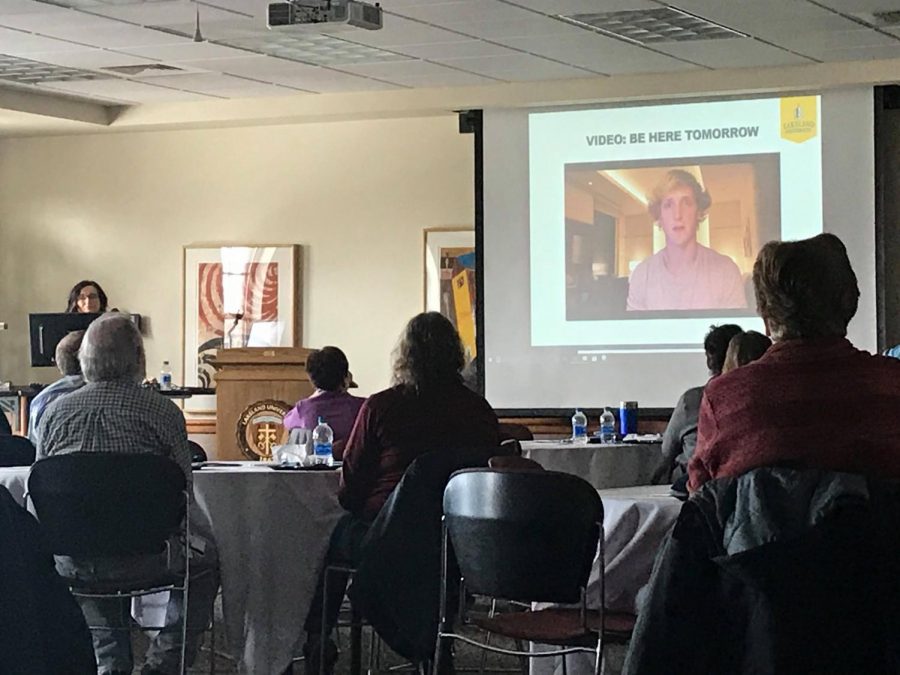Liosatos talks suicide
February 27, 2018
On Feb. 21, Dr. Alex Liosatos, head of the counseling department at Lakeland University, gave an informational LEAP session for faculty about suicide prevention and awareness.
Liosatos opened the eyes of the faculty by giving the statistics of over 800,000 people dying by suicide every year. In addition to those 800,000, there are an additional 50 million people who suffer from depression.
Liosatos mentioned common misconceptions associated with suicide that are not necessarily true, becoming myths. She mentioned that the most common myth is that suicidal behavior is simply a way of gaining attention from others. According to Liosatos, when someone is struggling and they say what is bothering them, it is actually a cry for help instead of attention. Another big myth is that because a person looks incredibly happy, they cannot be suicidal. Liosatos said that someone can have an exertion of happiness yet still feel very low on the inside.
Knowing what kind of language to use when speaking to someone about suicide is very important because it goes a long way to gaining the trust of the other person, Liosatos emphasized. She mentioned that “beating around the bush” is not effective because the message can get lost in translation, so getting straight to point is better for both parties involved. In addition, people need to understand of what sensitive language is and how to apply it.
Liosatos believes that when referring to someone who recently died due to suicide, it is important to put the person first. The phrase “committed suicide” is falling out of favor since it puts the blame on the victim, so the popular phrase now is “died by suicide.”
Liosatos noted some red flags for someone planning suicide including heavy alcohol or drug use, giving away treasured items, a sudden interest in death or religion, a change in their personality and withdrawing from people. While Liosatos believes people should keep on the lookout for said red flags, she also believes people should leave the diagnosis to the professional.
Liosatos suggested asking questions like the following: “Are you unhappy?” “Have you ever thought of killing yourself or have you ever wished you were dead?” However, she suggested avoiding questions like “You’re not thinking of killing yourself, are you?” because they diminish the purpose of trying to help.
According to Liosatos, the next step is making an alliance with the individual by avoiding any judgement, being persistent in questioning and, most importantly, letting them talk. By listening to what they are going through, people gain their trust so they feel comfortable talking about their feelings.
After discovering that a friend is self-harming, one can assist them by calling security, contacting a counselor, calling a local crisis hotline and helping them call a suicide prevention lifeline, Liosatos said. The suicide prevention lifeline is 1 (800) 273-8255 and the crisis hotline is 1 (775) 784-8090.


